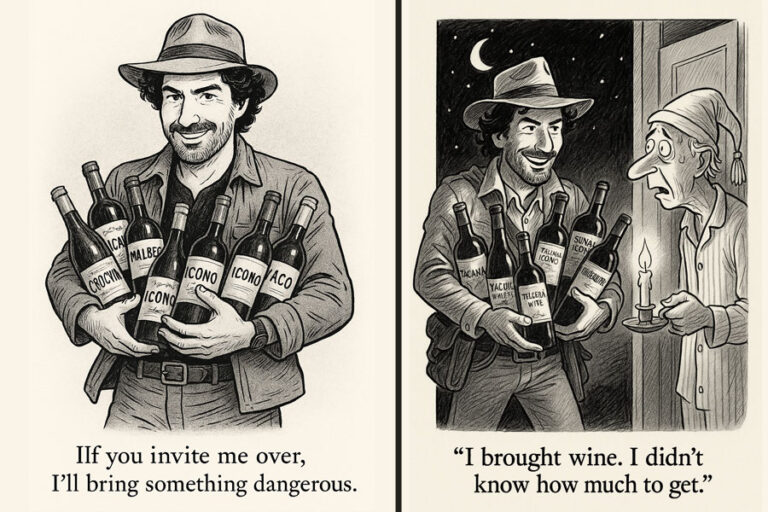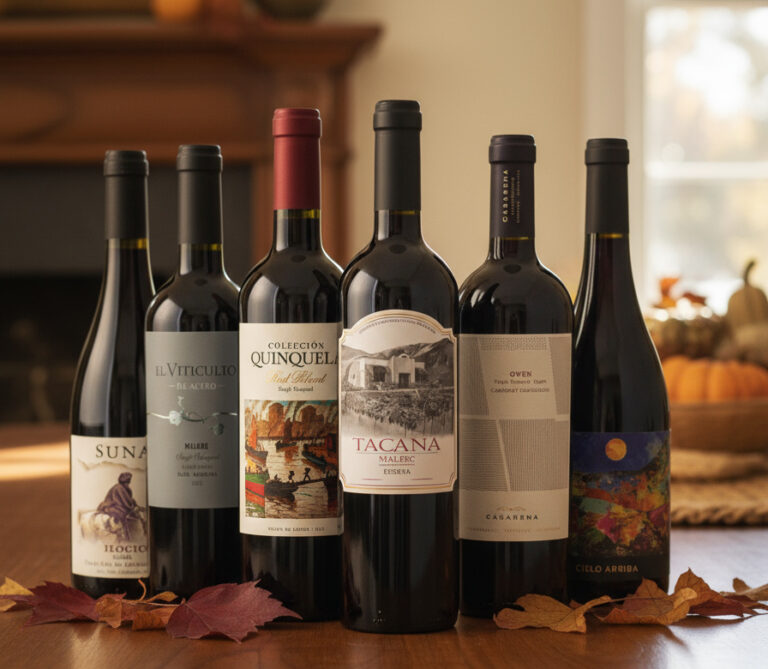[et_pb_section fb_built=”1″ admin_label=”section” _builder_version=”3.22″][et_pb_row admin_label=”row” _builder_version=”3.25″ background_size=”initial” background_position=”top_left” background_repeat=”repeat”][et_pb_column type=”4_4″ _builder_version=”3.25″ custom_padding=”|||” custom_padding__hover=”|||”][et_pb_text _builder_version=”4.3.2″]
We got a treat this week; someone sent us two bottles of “gris de gris” from Languedoc’s Corbières sub-region in France.
For those unfamiliar with the gris de gris, it’s one of the more rare wine styles. Untouched, as of yet, by the industry’s hype machine (which is still focused on orange wine and “all-day rosé”), gris de gris is tremendous value for the lively, “exuberant” experience it offers.
More on that in a moment… But first, Bordeaux vs. Rhône: Which steak-friendly red wine pairs best with your palate? In this week’s tasting video, resident expert Julien Miquel explains the difference between these two titans of red (think red fruits vs. jammy spice)… the importance of the “tannic structure”… why most “big reds” from any country are in either Bordeaux or Rhône style (and how to tell which style you’re dealing with)… and more…
[/et_pb_text][et_pb_video src=”https://www.youtube.com/watch?v=jZHYSvFHyOc&feature=youtu.be” _builder_version=”4.3.2″ hover_enabled=”0″ width_last_edited=”on|phone” width=”75%” width_tablet=”85%” width_phone=”95%” module_alignment=”center”][/et_pb_video][et_pb_text _builder_version=”4.3.2″]
“Grey” Wines of Languedoc (continued)
First things first, gris de gris translates to “grey from grey.” However, the wine itself, as evidenced by the picture below, is not grey. Nor is it rosé, exactly. And it’s not white or amber, either.
[/et_pb_text][et_pb_image src=”https://bonnerprivatewines.com/wp-content/uploads/2020/06/GrisdeGris.png” align=”center” _builder_version=”4.3.2″][/et_pb_image][et_pb_text _builder_version=”4.3.2″]
A lively, chilled glass of gris de gris
Now, we know what you’re thinking: “Mmm, that looks mighty similar to a blanc de noir Champagne.”
Ding… Ding… Ding! You’re right to notice the similarities in the coloring. Blanc de noir translates to “white from black,” and refers to a sparkling wine made from red grapes (usually pinot noir), but where the juice isn’t allowed to sit (or “macerate”) with its skins.
The product is pinkish, but not pink. Pale, but not white. Run the same process, but without the sparkling element, and you produce a vin gris, which is almost the same as gris de gris, but with one important distinction that we’ll get to in a moment.
The vin gris style is popular with pinot noir makers as it allows them to essentially double the output of their grapes using a method known as saignée or “bleeding.” First, they press their pinot grapes just enough to leach some juice without getting too much skin into the mix. They then “bleed” the juice out to ferment in another container without skin contact.
The grapes remaining in the press can be pressed again to produce a more concentrated pinot noir (due to a higher-than-normal ratio of skin to juice). Thus, the winemaker winds up with a gris and a pinot noir, all from the same grapes.
Vin gris is more common than gris de gris. It is also “unregulated,” in that a winemaker can use a wide variety of grapes to produce his vin gris.
Not so with a gris de gris, which must come from grenache gris, gamay, or cinsault grapes. The first of the trio provides a clue as to where the name gris de gris comes from.
While a regular gris wine can come from, say, pinot noir grapes, a gris de gris must come from a grenache… and not just any grenache, but a grenache gris. Thus, gris de gris or “gray from gray.”
Gris de gris are delicate, almost innocent wines, bursting with joy and personality. Think Katherine Hepburn in Bringing Up Baby. Or the other Hepburn in Roman Holiday.
Yet that personality requires a fastidious winemaking process – the right grape and the right amount of maceration. Fermentation and aging happen in stainless steel rather than oak (which would completely overpower it with ‘oakiness’).
Even the vines themselves require that a careful balance be kept between savage and groomed, chemical and natural, man and wild. The winemakers behind the gris de gris we’ve been drinking – Domaine de Fontsainte – tend towards la lutte raisonée, which translates to “the reasoned struggle,” a farming style that might be called “low intervention” here in the US.
Rather than commit to the rigid strictures of organic or biodynamic certification, these winemakers let their vineyards run wild, so long as they stay within reason. Think small government libertarianism rather than the extremes of either full-blown anarchy or top-down communism. A laissez-faire wine for a not-so-laissez-faire world.
Finally, we still have a couple cases of delicious white wine – along with several other summer/BBQ approved vintages – available as part of our cellar opening. But we’re already running out of some, so scoop up your wines while you can. Click here to see our inventory.
Until next week,
The Wine Explorer
[/et_pb_text][/et_pb_column][/et_pb_row][/et_pb_section]



